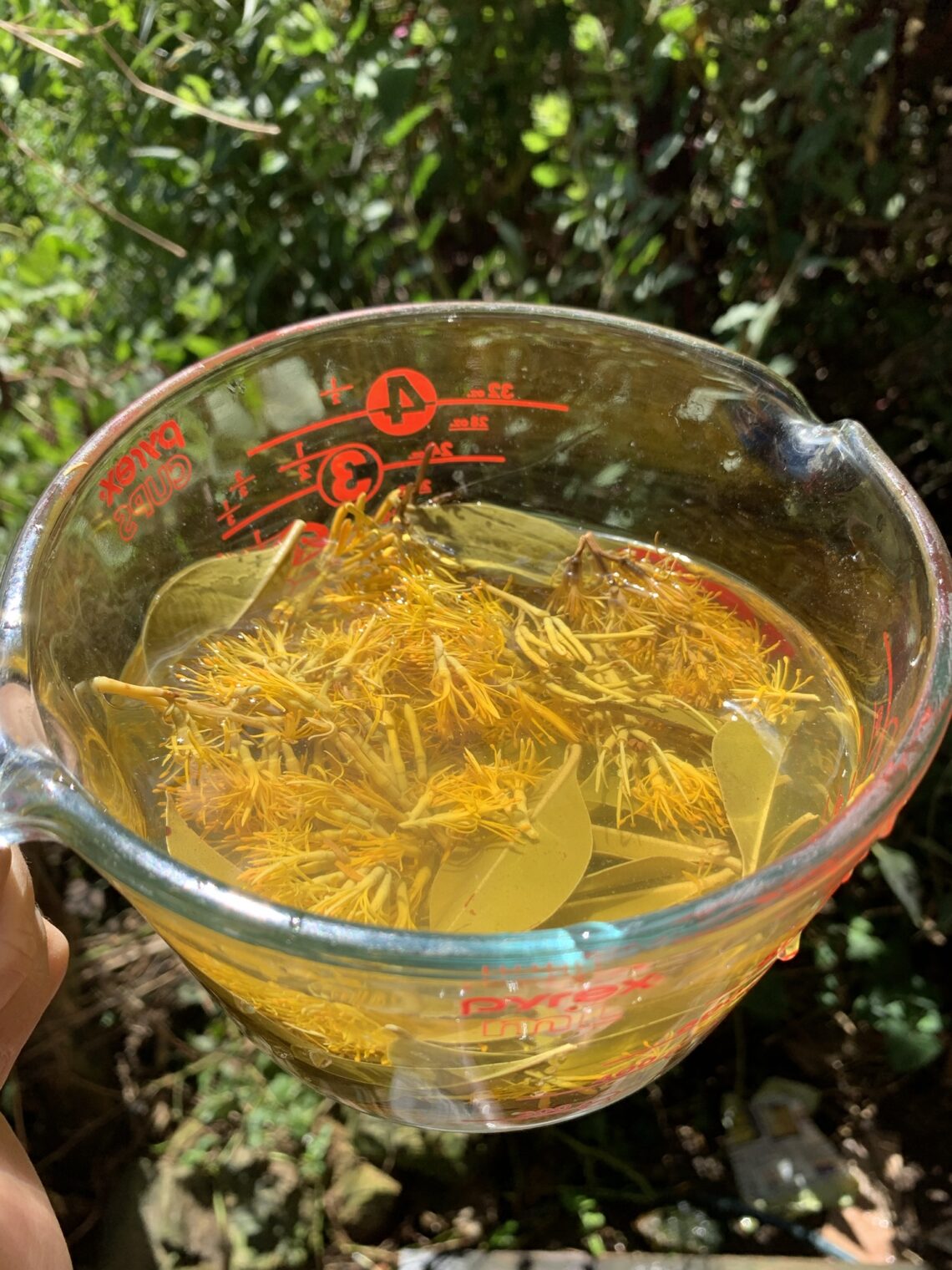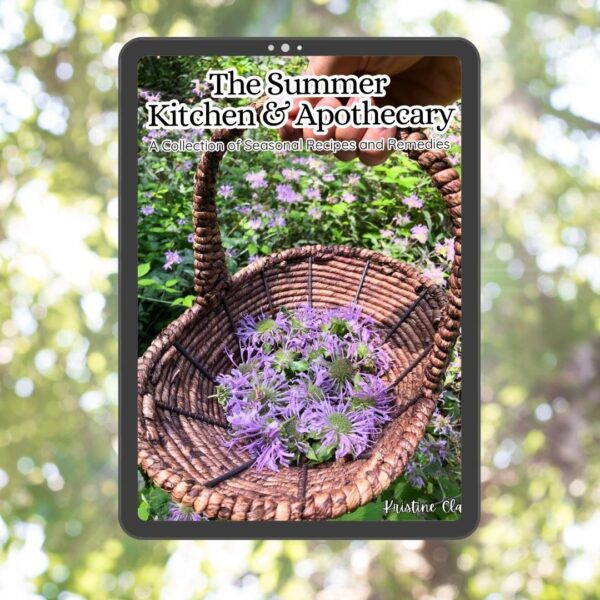Though I grew up and trained as an herbalist in North America, living here in Ecuador for the past several years has given me the chance to fall in love with many unique native Andean plants. One plant in particular, violeta de campo (Gaiadendron punctatum), has captured my attention for its beauty, scent, and rich history of traditional use.
This time of year, violeta de campo is in full bloom, perfuming the air with its sweet smelling, cheery yellow flowers. In Ecuador, this plant has a long been used in traditional medicine, especially among the Saraguro people, an Indigenous Kichwa group that lives in southern Ecuador. Among Ecuadorians who are still connected to the land, it’s considered an important folk remedy. Recently, I bumped into our neighbor on the trail on my walk home from harvesting some leaves and flowers. She smiled approvingly, and remarked what a good remedio (remedy) violeta de campo is.
Meet Violeta de Campo
Violeta de campo, or puchik as it’s called in Kichwa, is native to Ecuador, as well as Peru, Columbia, Bolivia, Venezuela, northern Brazil, Costa Rica, Nicaragua, and Panamá. Despite its common name, which literally means violet of the countryside, this plant is not related to the Viola species commonly known as violet. It is actually a mistletoe relative that is in the Loranthaceae family.
Violeta de campo is a parasitic shrub or small tree that is widely distributed in the Ecuadorian Andes. It can be found growing at elevations between 1,500 and 4,000 meters above sea level, and is common in tropical rain forests and subalpine areas.
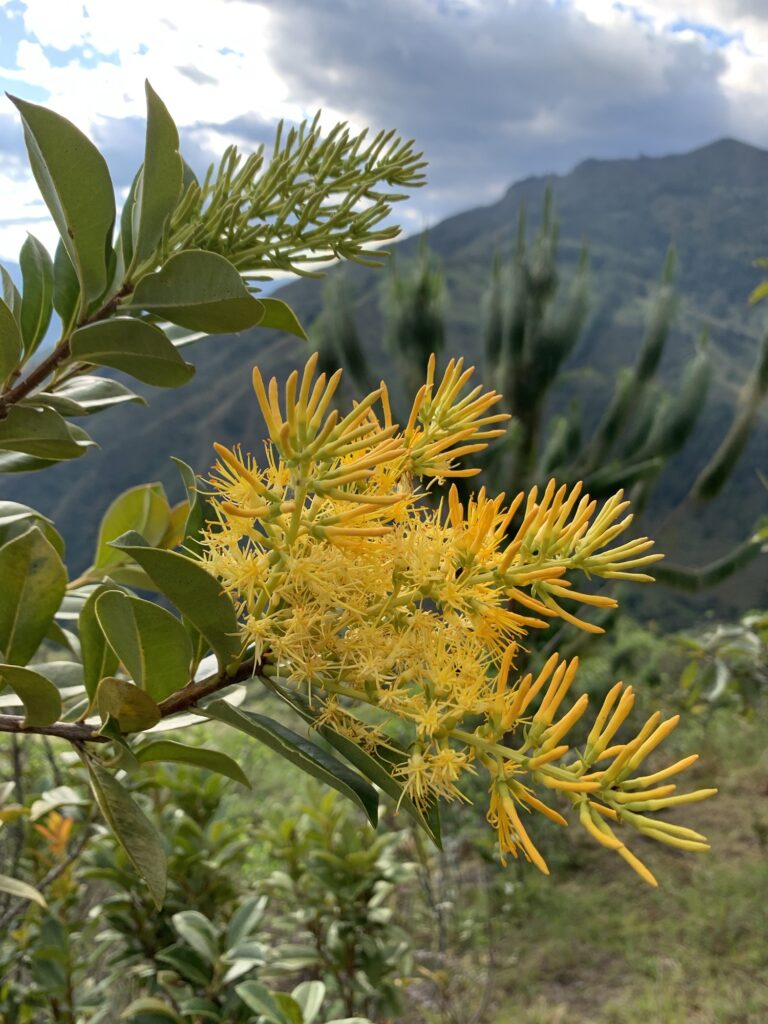
Traditional Uses of Violeta de Campo
Plants in the Loranthaceae family are known for their anti-inflammatory, antioxidant, antimalarial, antimicrobial, antiviral, and digestive properties. Researchers have identified glycosylated flavonoids and cardiac glucosides in this family, which are compounds that have a wide range of activities, including antioxidant, antimicrobial, vasodilatory, enzymatic inhibitory, anti-inflammatory, anti-tumor, and cytotoxic effects.
Although relatively few studies have focused specifically on violeta de campo, its traditional uses are extensive, including postpartum care, coughs, nerve conditions, insomnia, puberty-related issues, smallpox, and measles. The Saraguro people have long relied on violeta de campo in their folk medicine, using it for bronchitis, liver discomfort, influenza, and strong coughs. They also prepare an aqueous infusion of the leaves and flowers to use as a hair tonic. Our campesino neighbors (people who live have lived in the countryside raising animals and growing crops for generations) most commonly recommend it for treating coughs.
Modern Research on Violeta de Campo
Scientists studying samples of violeta de campo from southern Ecuador have identified several important compounds in the leaves and flowers, including well-known flavonoids like rutin and nicotiflorin, as well as three newly discovered quercetin-based glycosides named hecpatrin, gaiadendrin, and puchikrin. These compounds are thought to contribute to the plant’s numerous beneficial properties.
Research shows that G. punctatum leaf and flower extracts can help fight certain bacteria and inhibit the α-glucosidase enzyme, which plays a role in regulating blood sugar. While the isolated flavonoids showed only limited antimicrobial effects, some, including rutin, gaiadendrin, and nicotiflorin, were effective in inhibiting α-glucosidase, and hecpatrin worked in a slightly different way to support the same process. This research helps demonstrate violeta de campo’s beneficial properties, supporting its many traditional uses.
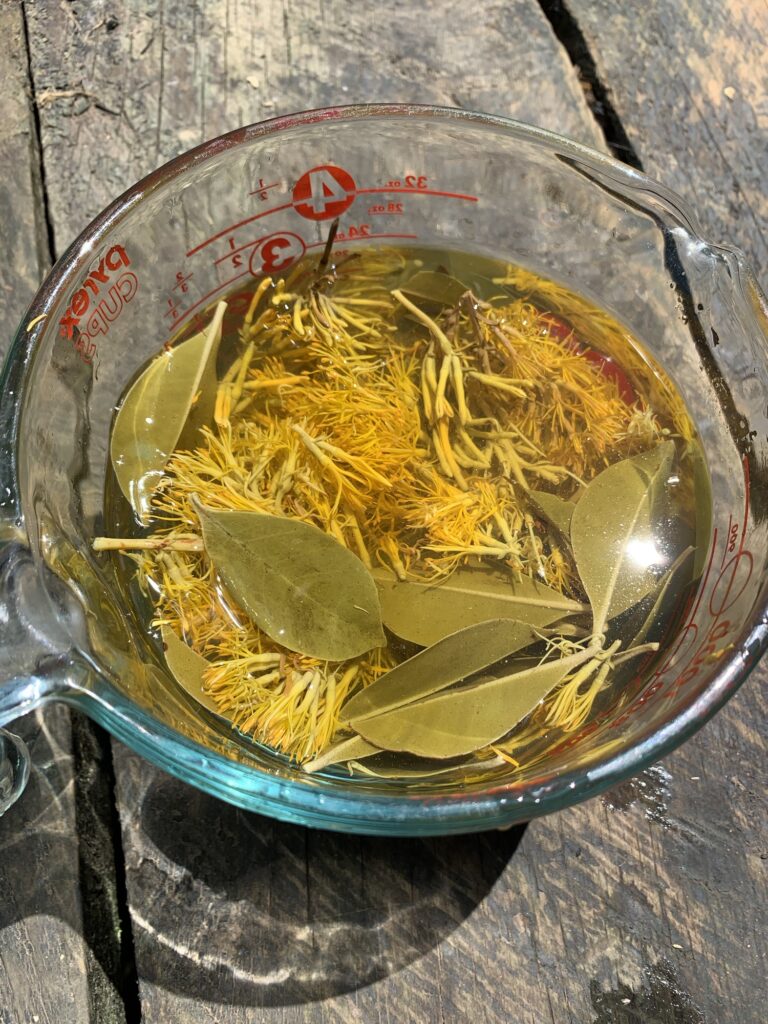
Making a Violeta de Campo Hair Rinse
Inspired by the Saraguro’s traditional use of this native plant as a hair and scalp tonic, I have started making my own hair rinse from the flowers and leaves. This simple beauty ritual connects me to local traditions, and leaves my locks feeling rejuvenated.
Violeta de campo is rich in flavonoids and glycosides that have antioxidant, antimicrobial, and anti-inflammatory properties, helping to soothe the scalp and support overall hair health.
In addition to these hair-loving properties, violeta de campo’s bright yellow flowers offer aromatherapeutic benefits. The sweet scent of an infusion of the plant is reminiscent of violets (Viola odorata). It makes for a gently mood boosting rinse that helps lift your spirits, while you care for your hair.
To Make Violeta de Campo Hair Rinse You Will Need:
- Fresh violeta de campo leaves and flowers
- Hot water
- A heatproof container or jar
- Strainer
How to Make:
Harvest some fresh violeta de campo leaves and flowers. Be sure to forage responsibly, only taking what you need and taking care to damage the plant as little as possible.
Place a the violeta de campo leaves and flowers into your container.
Pour hot water over the plant material and let it steep for until cooled to room temperature.
Strain the infusion into a clean bottle or jar, and compost the herb.
After washing your hair, pour the infusion over your scalp and hair.
Gently massage into your hair and leave it in, no rinsing needed.
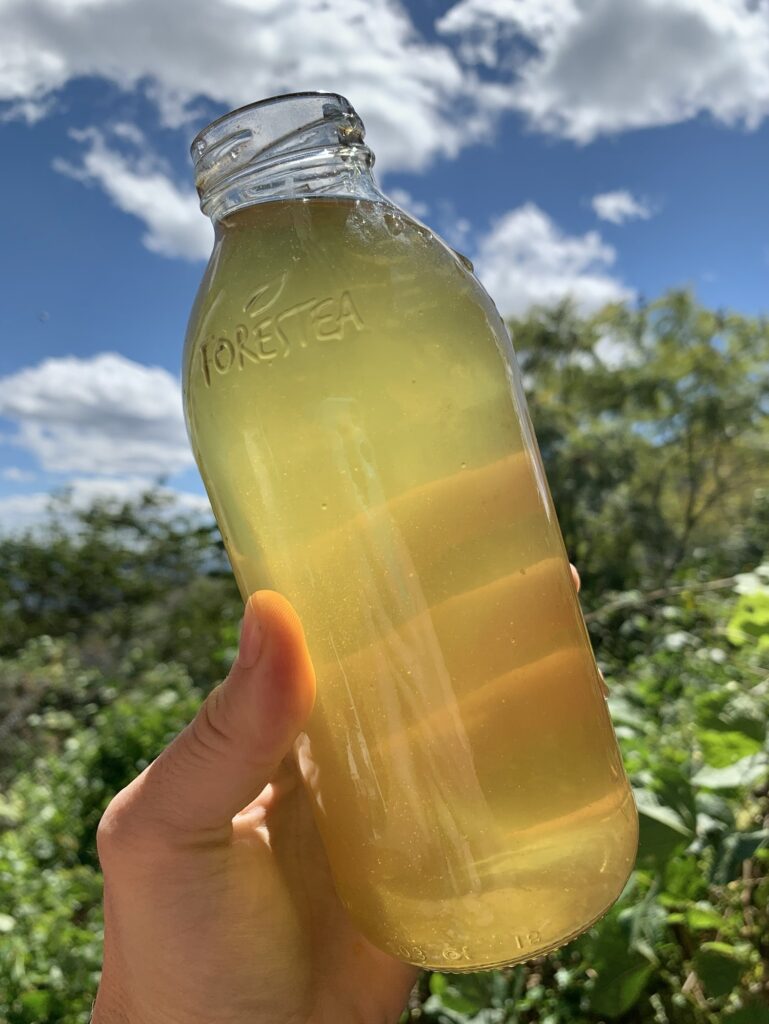
Harnessing the Magic of Plants for Natural Hair Care
Using violeta de campo as a hair rinse is a simple way to incorporate native plants into your self-care routine. From foraging the bright yellow flowers to pouring the sweet smelling rinse onto your hair, each step honors generations of knowledge preserved by the Saraguro people. Beyond its cultural significance, the plant’s beneficial properties help nourish the scalp, leaving hair soft, shiny, and healthy.
Even if you don’t live in Ecuador or have access to violeta de campo, there are many ways to use herbs to promote the health of your hair and scalp. On the blog, I share a few different herbal hair rinses using more widely available ingredients. Check out these posts for more DIY herbal hair care ideas:
- Spiced Pine Vinegar Hair Rinse
- Hibiscus & Peppermint Herbal Hair Rinse
- Oregano & Tea Tree Vinegar Hair Rinse
- Coffee Scalp Scrub
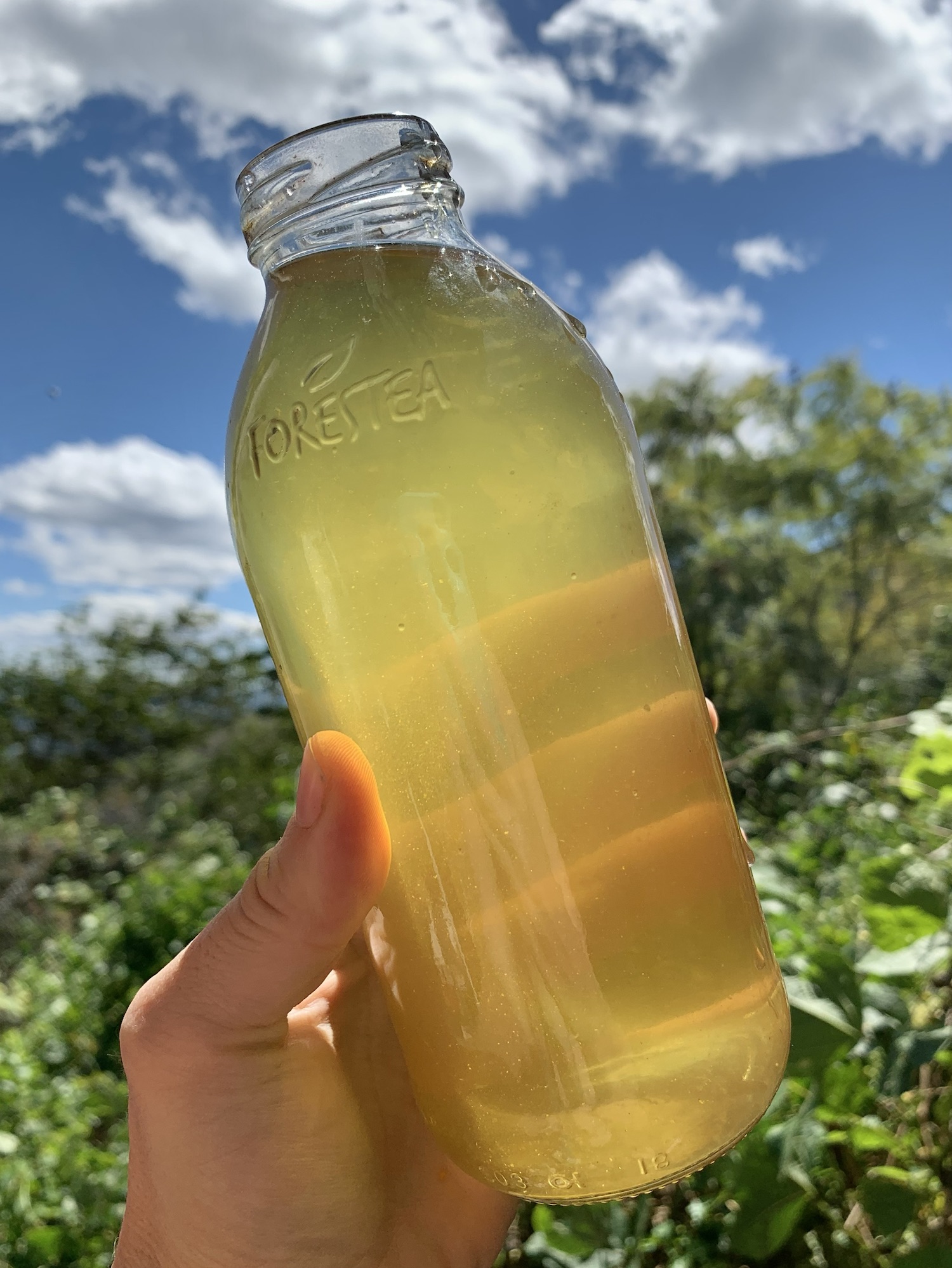
Ingredients
Method
- Place a the violeta de campo leaves and flowers into your container.
- Pour hot water over the plant material and let it steep for until cooled to room temperature.
- Strain the infusion into a clean bottle or jar, and compost the herb.
- After washing your hair, pour the infusion over your scalp and hair.
- Gently massage into your hair and leave it in, no rinsing needed.
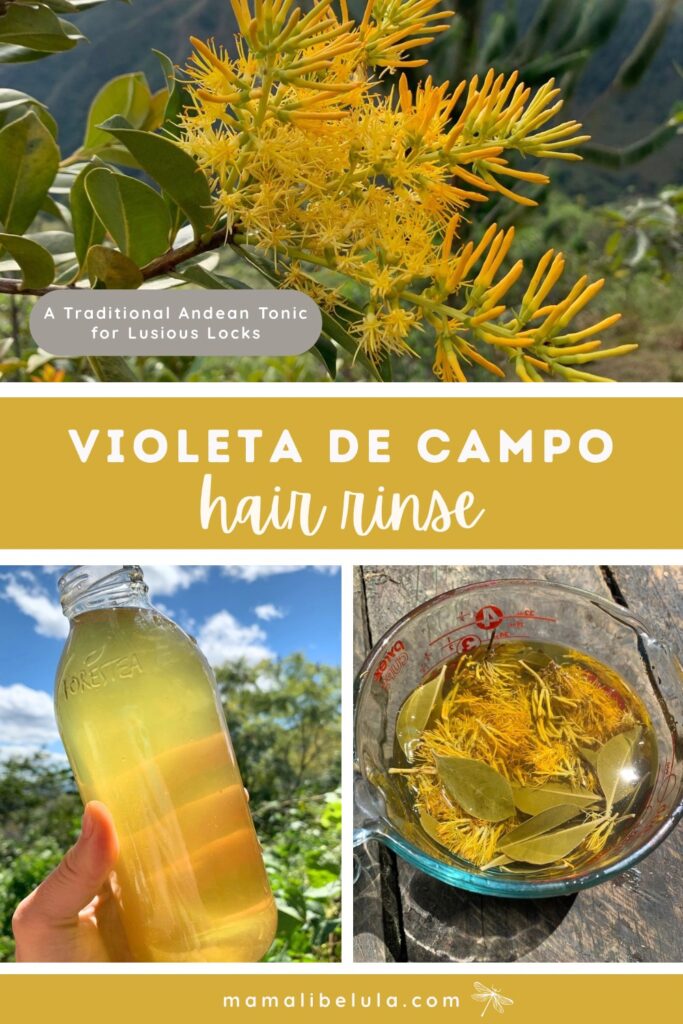
You’ll find even more natural hair care recipes in my ebook, The Summer Kitchen & Apothecary, including:
- Bee Balm Shampoo Bars
- Rosemary Dry Shampoo
- Red Clover Hair Serum
- Citrus & Sea Salt Hair Spray
References
Hector, C., Espinosa, S., Andrade, J., Cartuche, L., & Malagon, O. (2019). Novel flavonoid glycosides of quercetin from leaves and flowers of Gaiadendron punctatum G. Don. (Violeta de Campo), used by the Saraguro community in southern Ecuador, inhibit α-glucosidase enzyme. Molecules, 24(24), 4267. https://doi.org/10.3390/molecules24234267
